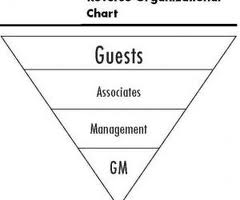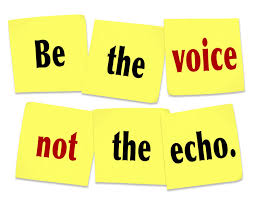Hello again friends,
Last time I wrote about being an authentic leader, handling your job responsibilities as a real and genuine person, in the context of what some experts now call “Integral Business” practices. This concept of integrating business and management practices into demonstrating attitudes and behaviors which show respect and appreciation for another person’s body, mind, and spirit is truly cutting edge leadership development. I discussed Fred Kofman’s seminal new book “Conscious Business; how to build value through values” in my last blog. I was pleased to see it highlighted on LinkedIn by the following Bloomberg video http://www.bloomberg.com/video/the-mental-shift-that-can-change-everything-lkhtF4n6RzaivQGx5LAQLw.html?cmpid=yhoo . I also want to thank all of you who contacted me both on and off the blog site with your interest in this topic. It’s wonderful to receive your comments and it keeps me inspired to continue our dialogue.
After many years of teaching leadership development to diverse audiences, I am always surprised that some participants think this is a “static” learning process. By this I mean, the notion that if you learn certain basic core concepts well, you have aced the field of leadership development and are well on your way to becoming a leader of greatness. Dear me, how to open those outdated eyes?
Leadership development is a process, just like life itself is a process. Consider this; would you make many of the same choices today that you made say ten, twenty, thirty years ago? Certainly some choices you would make just the same today, and those are often based upon values you have defined as yours over many years. However, many choices you made you would either make or implement very differently today, based upon your personal growth and maturation in the process of living life.
When I first started taking “management training” classes back in the stone age, (joke intended here), the training was very black and white. It was linear, meaning a straight path to doing the one correct thing. Classes focused upon a leader’s need to be strong, confident, and decisive. We were told how to give orders that subordinates would follow, how to instill proper respect, how to make people adhere to our direction. In effect, we were taught how to lead people as though we were field generals and the employees were conscripts. This is often called “instrumental” leadership.
Who knew back in those days that most leadership development courses today are as much about mind and brain functioning as they are about the bottom line? Who guessed we would take DISC training, study cognitive behavioral theories, advanced communication techniques, consider the ramifications of Maslow’s theories, develop an advanced understanding of age, gender, and ethnic diversity, adult learning theory or andragogy, and learn from the seminal works of Daniel Goleman the vital language of emotional intelligence?
If you have attended leadership development courses in the last decade, you have learned that leading others effectively is basically about two areas of expertise: First, you must know and understand yourself thoroughly, including your own hot buttons and motivations, strengths as well as weaknesses, and what your personal values and beliefs actually are. And then, AFTER you have devoted intense effort into self-awareness into really understanding how and why you function as you do, you can begin to study and understand how to motivate others. This is called “expressive leadership”.
There is another key piece to grasp. Back in the day, there was always the elitist unspoken perception that the boss was smarter than the employee. Guess what, no go today. People with impressive resumes and curriculum vitae are working in non-management jobs throughout every workplace; both by choice because they value other aspects of their life more, and also by economic necessity. Saying “Do it because I told you or get fired!” simply points out to many very smart team members what a fool their so-called leader actually is.
Threats don’t work in this context. Sometimes I think I should have folks write that one hundred times on the board “Threats don’t work”! Threats may result in getting some task completed. But, they also have the indirect result of loss of respect and even an unspoken derision. People know you cannot truly lead and motivate others if you resort to threats. It changes and establishes a very negative perception of you.
Ah, the powerful word: PERCEPTION. The way someone sees and believes their world and the people and things within it to actually be.
As you may know, your perception is your reality. If you think all dogs will bite you, then your reality is fear of all dogs. If you believe you have a beautiful spirit, then that too is your reality. If you believe in a specific faith, that is your belief system. If you believe your boss is a good person trying hard to do the right thing, that is your perception of your boss. That is who you see them to be. For you, this is the truth about them. I am saying that this may not be “the” truth, but it is “your” truth.
It appears based upon my poll last blog and also on current research, that many of us have been, and some unfortunately still are, forced to struggle with an uneasy and disturbing sense and perception of being manipulated by key people in our lives who hold positions of authority, and also with the deep concern that we not be perceived this manipulative way ourselves. And that is my talking point in today’s message: “perception”.
My readership here on the GratefulEdge blog has become gratifyingly diverse as well as international in scope. I am now being read and receiving feedback from literally every continent. And so I know that many of my readers are not engaged in a hierarchical business environment every day, but many are. By this, I mean that many of you are working in an organizational structure in which the leadership is positioned at the top and the working place chart or visual model fans out to a larger sector of the workforce at the bottom , what is usually an isosceles trianglular shaped organization chart.
Note that I say “usually”. This is because some very interesting variations of a normal workplace organizational chart have been developed. Some are reversed, to indicate the leadership coming from each individual team member. Some are circular, with variations, to indicate different levels of hierarchy and decision making. Some represent the customer as the focal point of the org chart rather than an executive leader. Here are a few examples:



You may wonder why I have chosen organizational charts to illustrate a discussion on perception. This is because the org chart is a visual representation of the culture of the workplace or group which it exemplifies. This could just as easily be an org chart of a community organization or volunteer entity. It is simply a visual representation of the way the leadership sees their structure.
Typically, most org charts show a leader at the top and like the consecutive branches of a large fir tree, each rung below expands and offers stair steps downward until at the end of the tree lie the lower level team members. They are positioned at the very base and can crane their necks back to see the illustrious leaders above them. Or not. This hierarchical representation is also found in micro form as well as macro, as each division, department, team, and group, can map their own leadership structure.
Now I ask your consideration of the unbounded, innovative, and risk-taking environments which must have produced these inverted and circular org charts. Imagine the free-wheeling discussions? Imagine the lack of insecurity issues which would allow a high ranking leader to place themselves at the bottom of that fir tree looking UP at the line team members? Think about WHY they would do that. Seek the motivational message within the visual. Imagine the discussions people had when they decided that inverting their visual representation of their culture was the right thing to do. And consider those companies that found hierarchy so distasteful that they actually went circular in representation. They must have had some mind-bending discussions!
I often lead seminars and think tank groups about mission development and goal statements. Every once in a great while I do come into an environment where people are eager and very willing to overturn traditional models and see what could work better for their innovative group goals and dreams. These people are not averse to taking risk and they open themselves up for difficult conversations in the hope that it will produce significant culture changing results. More often people work on the mission statement vigorously for a while and then once it has been published, they file it on a high shelf and rarely look at it again.
Give some thought to the org charts within which you function and see what it says to you and what your perception is of this entity. How does the org chart speak of relationships? Ask yourself to imagine being at different locations within that structure and consider how you would develop your creativity and solve problems in each differing location. I challenge you to create an org chart of your own family, as well as your community groups. Ask yourselves the tough questions about hierarchical relationships. What is your gut feeling about the visual representation of the entities within which you work, live, play, and worship? Where have you placed yourself and why? Consider the impact structured hierarchy has upon creativity, risk taking, innovation, problem solving, mentoring relationships, and ambition.
This blog has been about our perception of the external environments around us. Next time I will be further developing this key theme for positive motivational leadership.
Understanding the potent possibilities which lie within perceptions, both our own beliefs about others and their beliefs about us, is vital to becoming a strong and motivational human being.
At the end of the day, these are the admirable individuals, regardless of their age, gender, or ethnicity, for whom others give their best because they want to and for whom they have high regard, respect, and with whom they find pleasure and reward in their interactions.
Until next time,
Marie





